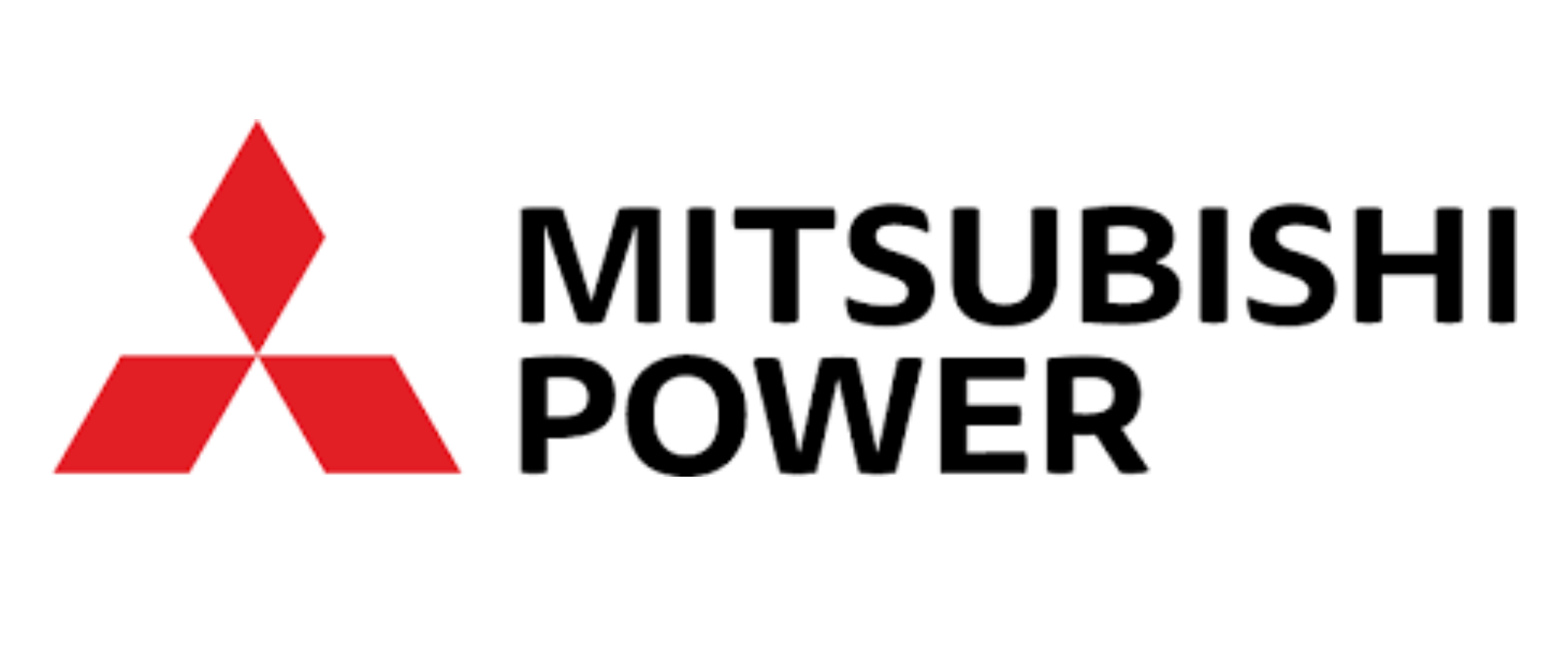Mitsubishi Power, Georgia Power, EPRI Complete World’s Largest Hydrogen Fuel Blending at Plant McDonough-Atkinson

- The project demonstrates retrofitting of Mitsubishi Power’s fleet of advanced-class gas turbines to operate on a hydrogen fuel blend.
- Georgia Power has already reduced carbon emissions by more than 60%, this new project showcases potential for further reductions using existing infrastructure.
- Dry low NOx hydrogen blending on the M501G gas turbine was executed at the designed 100% natural gas firing temperature, within emissions compliance and without impact to maintenance intervals.
- Tests included blending 20% hydrogen — an industry first for an advanced-class gas turbine — resulting in an approximately 7% reduction in CO2 emissions.
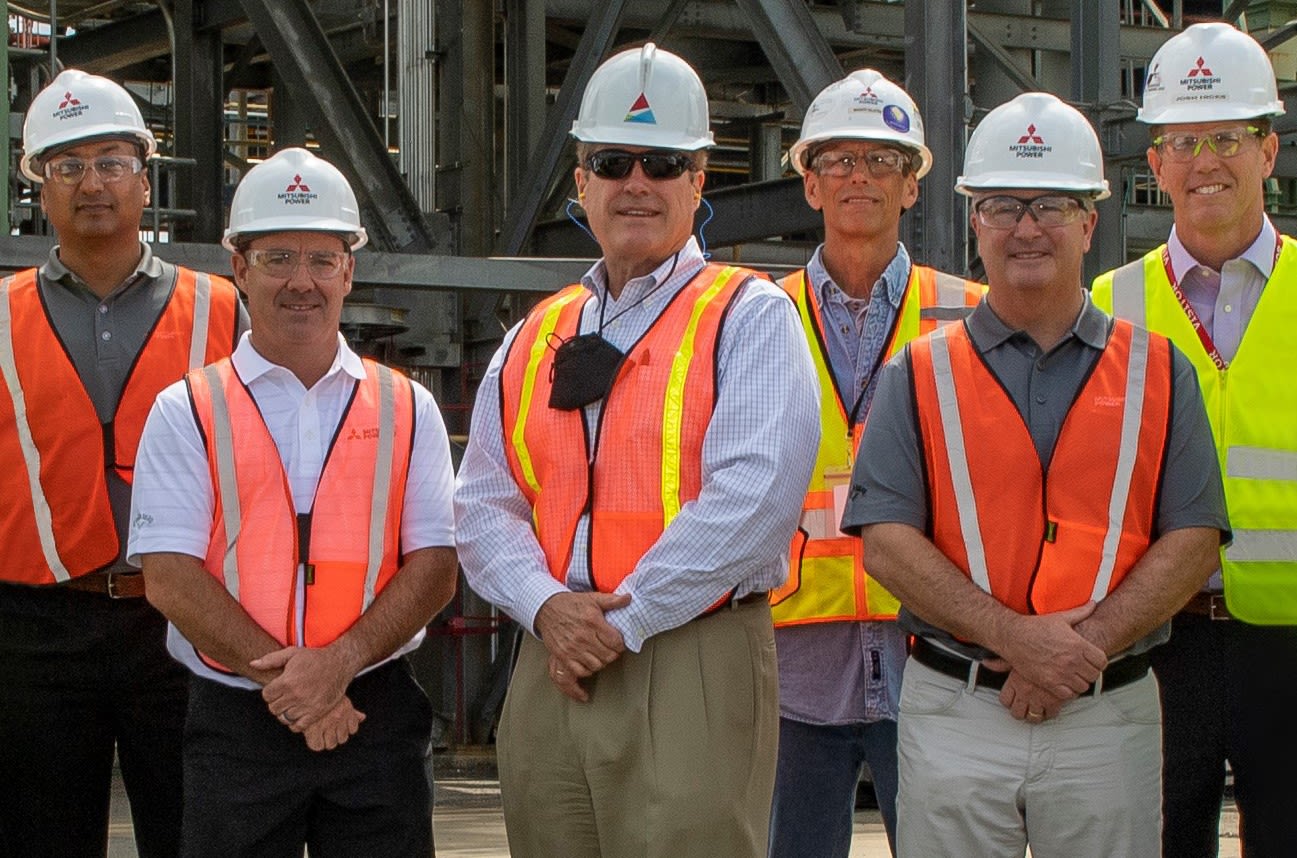
Mitsubishi Power and Georgia Power, alongside the Electric Power Research Institute (EPRI), successfully validated 20% hydrogen (by volume) fuel blending at Plant McDonough-Atkinson in Georgia.Pictured from left to right: Prasanth Thupili, SVP, Power Generation Services, Mitsubishi Power Americas; Mark Bissonnette, EVP and COO Power Generation, Mitsubishi Power Americas; Allen Reaves, SVP and Senior Production Officer, Georgia Power; Scott Cloyd, Gas Turbine Service Engineering Chief Engineer, Mitsubishi Power Americas; Bill Newsom, President and CEO Mitsubishi Power Americas; Josh Hicks, VP, Service Operations US/Canada, Mitsubishi Power Americas (Credit: Mitsubishi Power)
Mitsubishi Power and Georgia Power, alongside the Electric Power Research Institute (EPRI), successfully validated 20% hydrogen (by volume) fuel blending at Plant McDonough-Atkinson in Georgia.Pictured from left to right: Prasanth Thupili, SVP, Power Generation Services, Mitsubishi Power Americas; Mark Bissonnette, EVP and COO Power Generation, Mitsubishi Power Americas; Allen Reaves, SVP and Senior Production Officer, Georgia Power; Scott Cloyd, Gas Turbine Service Engineering Chief Engineer, Mitsubishi Power Americas; Bill Newsom, President and CEO Mitsubishi Power Americas; Josh Hicks, VP, Service Operations US/Canada, Mitsubishi Power Americas (Credit: Mitsubishi Power)
ATLANTA, (June 10, 2022) - Mitsubishi Power and Georgia Power, alongside the Electric Power Research Institute (EPRI), this month successfully validated fuel blending of hydrogen and natural gas at both partial and full load on an M501G natural gas turbine at Georgia Power’s Plant McDonough-Atkinson in Smyrna, Georgia. The demonstration project was the first to validate 20%* hydrogen fuel blending on an advanced class gas turbine in North America, and the largest test of this kind to date, with the 20% blend providing an approximately 7% reduction in carbon emissions compared to natural gas.
Georgia Power, the largest electric subsidiary of Southern Company, collaborated with Mitsubishi Power for the landmark testing as part of a continued commitment to new research and development (R&D) to build the energy grid of the future and to reduce carbon emissions across its generation fleet, with Georgia Power having already reduced its carbon emissions by more than 60% since 2007.
The Plant McDonough-Atkinson facility, located less than 10 miles from downtown Atlanta, has served electric customers for more than 80 years and was fully converted to natural gas in 2012 and expanded to power up to 1.7 million homes. It currently operates six state-of-the-art, large-capacity M501G series gas turbines, which deliver high performance and high efficiency, as well as three steam turbines running in three blocks of 2-on-1 combined-cycle configuration.
Mitsubishi Power completed the hydrogen blending on one M501G gas turbine unit with an approximate output of 265 MW by utilizing some results of a project commissioned by the New Energy and Industrial Technology Development Organization (NEDO), Japan’s national research and development agency. Dry low NOx (DLN) hydrogen blending was successful at up to 20% at the designed 100% natural gas firing temperature, within emissions compliance for the existing air permit, and without impact on the maintenance intervals. The team also confirmed improved turndown by testing up to 20% hydrogen at minimum emissions-compliant load.
Mitsubishi Power provided full turnkey service for this project including engineering, planning, hydrogen blending hardware, controls, commissioning and risk management. Mitsubishi Power partnered with Certarus to source and manage the hydrogen supply. This project builds upon Mitsubishi Power’s hydrogen combustion experience and ongoing hydrogen combustion development for 100% hydrogen DLN combustion at the company’s facility at Takasago Works in Hyogo Prefecture, Japan. This site encompasses the development, design and manufacture of gas turbines, as well as demonstration and verification. The company recently announced it will establish a Takasago Hydrogen Park, which started construction in quarter one of 2022. It will be the world’s first center for validation of hydrogen-related technologies. With this comprehensive capability, the company is working toward commercializing highly reliable, carbon-free power generation technologies and products, including tests and collaboration with partners around the world on a path to 100% hydrogen firing for small- and large-frame gas turbines in the future.
“This monumental hydrogen demonstration project at Plant McDonough-Atkinson is another example of how, at Georgia Power and Southern Company, we are building the future of energy, today. This demonstration helps pave the way for long-term clean and carbon-free use for already existing infrastructure. Making these smart investments today on behalf of our customers ensures we can continue to provide clean, safe, reliable and affordable energy as Georgia grows and thrives for decades to come,” said Allen Reaves, Senior Vice President and Senior Production Officer, Georgia Power. “This kind of research and development not only delivers long-term value for our customers, but also helps drive the entire energy industry forward toward a cleaner, carbon-free future. We’re proud to be playing an important role in that and excited about what we’ve been able to accomplish with our partner, Mitsubishi Power Americas.”
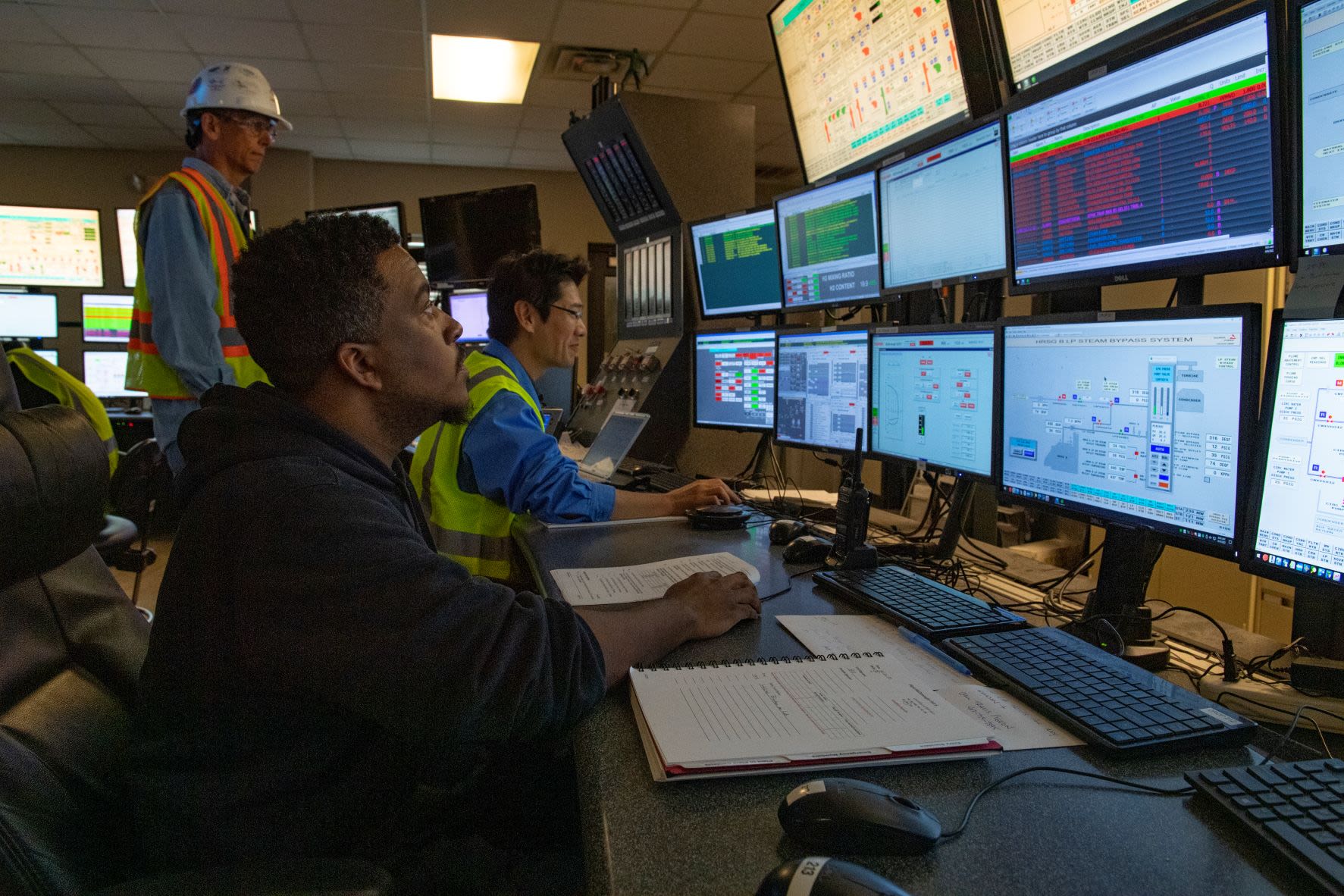
Traditional animation (also called cel animation or hand-drawn animation) was the process used for most animated films of the 20th century.
The individual frames of a traditionally animated film are photographs of drawings that are first drawn on paper.
To create the illusion of movement, each drawing differs slightly from the one before it. The animators' drawings are traced or photocopied onto transparent acetate sheets called cels, which are filled in with paints in assigned colors or tones on the side opposite the line drawings. The completed character cels are photographed one-by-one against a painted background by a rostrum camera onto motion picture film . The traditional cel animation process became obsolete by the beginning of the 21st century. Today, animators' drawings and the backgrounds are either scanned into or drawn directly into a computer system.
Various software programs are used to color the drawings and simulate camera movement and effects.
The final animated piece is output to one of several delivery media, including traditional 35 mm film and newer media such as digital video. The "look" of traditional cel animation is still preserved, and the character animators' work has remained essentially the same over the past 70 years. Some animation producers have used the term "tradigital" to describe cel animation which makes extensive use of computer technology. Examples of traditionally animated feature films include Pinocchio (United States, 1940), Animal Farm (United Kingdom, 1954), and Akira (Japan, 1988). Traditional animated films which were produced with the aid of computer technology include The Lion King (US, 1994) Sen to Chihiro no Kamikakushi (Spirited Away) (Japan, 2001), and Les Triplettes de Belleville (France, 2003).
In computer displays, filmmaking, television production, and other kinetic displays, scrolling is sliding text, images or video across a monitor or display, vertically or horizontally. "Scrolling", as such, does not change the layout of the text or pictures, but moves (pans or tilts) the user's view across what is apparently a larger image that is not wholly seen. A common television and movie special effect is to scroll credits, while leaving the background stationary. Scrolling may take place completely without user intervention (as in film credits) or, on an interactive device, be triggered by touchscreen or computer mouse motion or a keypress and continue without further intervention until a further user action, or be entirely controlled by input devices. Scrolling may take place in discrete increments (perhaps one or a few lines of text at a time), or continuously (smooth scrolling). Frame rate is the speed at which an entire image is redisplayed. It is related to scrolling in that changes to text and image position can only happen as often as the image can be redisplayed. When frame rate is a limiting factor, one smooth scrolling technique is to blur images during movement that would otherwise appear to "jump". The term scrolling is also used for a type of misbehavior in an online chat room whereby one person forces the screens of others in a chat to scroll by inserting much noise or special control characters.
Words from http://en.wikipedia.org/wiki/Animation and http://en.wikipedia.org/wiki/Scrolling.

Plant McDonough-Atkinson Power Plant, (Georgia Power)
Plant McDonough-Atkinson Power Plant, (Georgia Power)
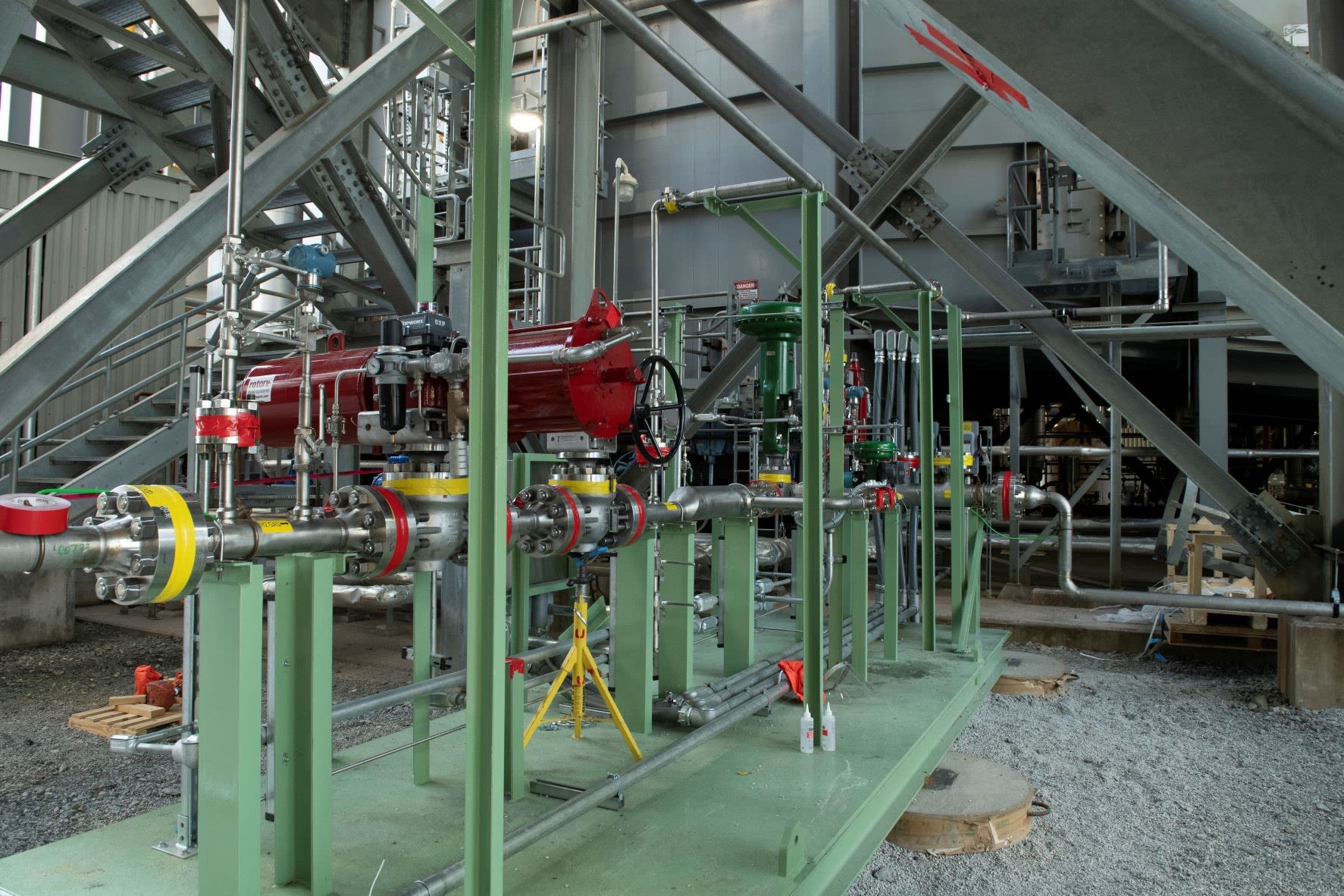
Pressure control skid (Credit: Georgia Power)
Pressure control skid (Credit: Georgia Power)
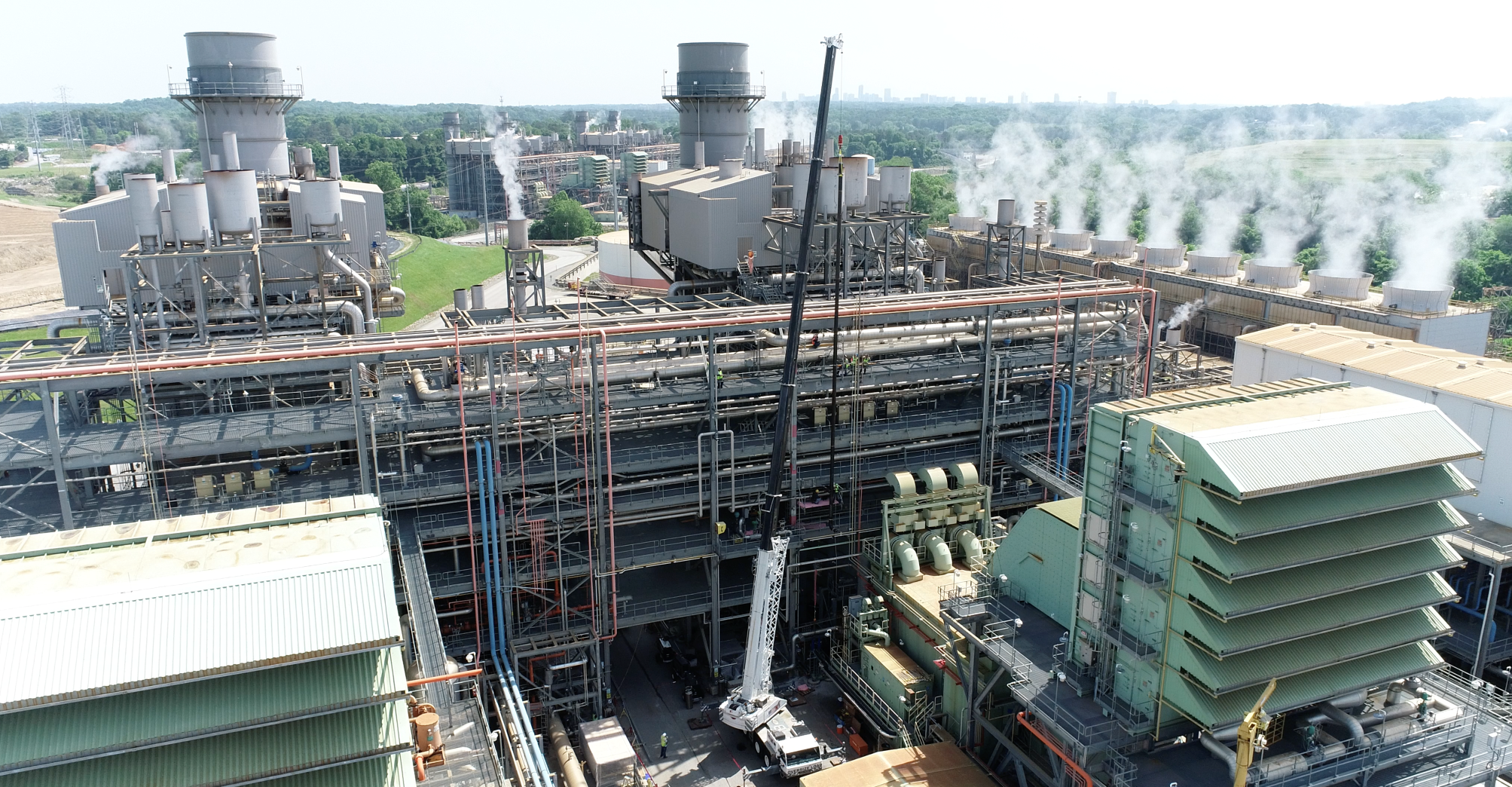
Plant McDonough Aerial View (Credit: Georgia Power)
Plant McDonough Aerial View (Credit: Georgia Power)
About Mitsubishi Power Americas, Inc.
Mitsubishi Power Americas, Inc. (Mitsubishi Power) headquartered in Lake Mary, Florida, employs more than 2,300 power generation, energy storage, and digital solutions experts and professionals. Our employees are focused on empowering customers to affordably and reliably combat climate change while also advancing human prosperity throughout North, Central, and South America. Mitsubishi Power’s power generation solutions include gas, steam, and aero-derivative turbines; power trains and power islands; geothermal systems; PV solar project development; environmental controls; and services. Energy storage solutions include green hydrogen, battery energy storage systems, and services. Mitsubishi Power also offers intelligent solutions that use artificial intelligence to enable autonomous operation of power plants. Mitsubishi Power is a power solutions brand of Mitsubishi Heavy Industries, Ltd. (MHI). Headquartered in Tokyo, Japan, MHI is one of the world’s leading heavy machinery manufacturers with engineering and manufacturing businesses spanning energy, infrastructure, transport, aerospace, and defense. For more information, visit the Mitsubishi Power Americas website and follow us on LinkedIn.
About Georgia Power
Georgia Power is the largest electric subsidiary of Southern Company (NYSE: SO), America's premier energy company. Value, Reliability, Customer Service and Stewardship are the cornerstones of the company's promise to 2.7 million customers in all but four of Georgia's 159 counties. Committed to delivering clean, safe, reliable and affordable energy at rates below the national average, Georgia Power maintains a diverse, innovative generation mix that includes nuclear, coal and natural gas, as well as renewables such as solar, hydroelectric and wind. Georgia Power focuses on delivering world-class service to its customers every day and the company is recognized by J.D. Power as an industry leader in customer satisfaction. For more information, visit www.GeorgiaPower.com and connect with the company on Facebook (Facebook.com/Georgia Power), Twitter (Twitter.com/GeorgiaPower) and Instagram (Instagram.com/ga_power).
About Southern Company
Southern Company (NYSE: SO) is a leading energy company serving 9 million customers through its subsidiaries. The company provides clean, safe, reliable and affordable energy through electric operating companies in three states, natural gas distribution companies in four states, a competitive generation company serving wholesale customers across America, a leading distributed energy infrastructure company, a fiber optics network and telecommunications services. Southern Company brands are known for excellent customer service, high reliability and affordable prices below the national average. For more than a century, we have been building the future of energy and developing the full portfolio of energy resources, including carbon-free nuclear, advanced carbon capture technologies, natural gas, renewables, energy efficiency and storage technology. Through an industry-leading commitment to innovation and a low-carbon future, Southern Company and its subsidiaries develop the customized energy solutions our customers and communities require to drive growth and prosperity. Our uncompromising values ensure we put the needs of those we serve at the center of everything we do and govern our business to the benefit of our world. Our corporate culture and hiring practices have been recognized nationally by the U.S. Department of Defense, G.I. Jobs magazine, DiversityInc, Black Enterprise, Forbes and the Women's Choice Award. To learn more, visit www.southerncompany.com.
About EPRI
Founded in 1972, EPRI is the world's preeminent independent, non-profit energy research and development organization, with offices around the world. EPRI's trusted experts collaborate with more than 450 companies in 45 countries, driving innovation to ensure the public has clean, safe, reliable, affordable, and equitable access to electricity across the globe. Together, we are shaping the future of energy.

